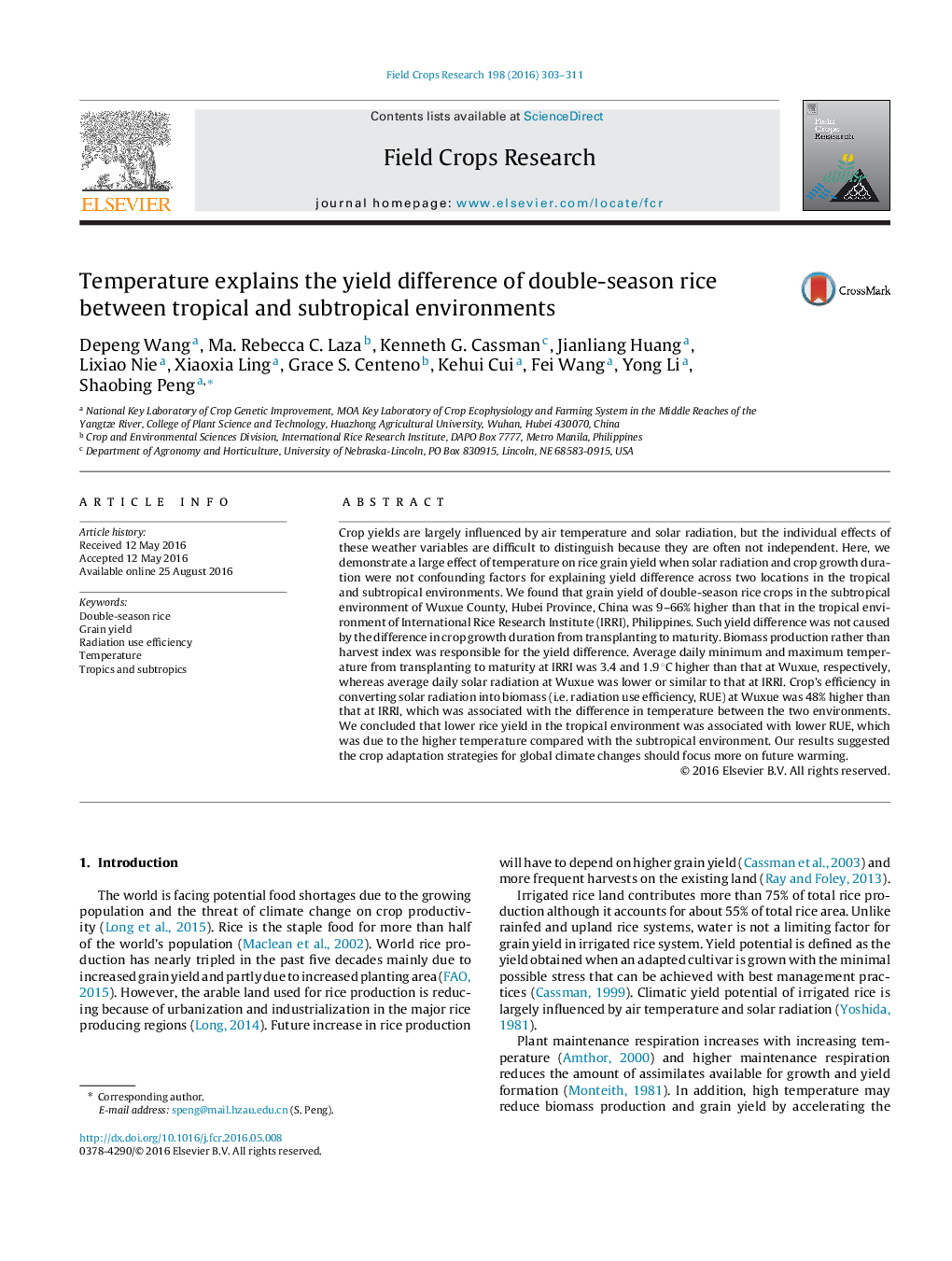| کد مقاله | کد نشریه | سال انتشار | مقاله انگلیسی | نسخه تمام متن |
|---|---|---|---|---|
| 6374417 | 1624665 | 2016 | 9 صفحه PDF | دانلود رایگان |
- Double-season rice of subtropical environment produced 9-66% higher yield than that of the tropics independent of crop growth duration.
- Temperature explained rice yield difference between the tropical and subtropical environments.
- Lower rice yield in the tropical environment was associated with lower radiation use efficiency.
- Radiation use efficiency was reduced by the high temperature in the tropical environment.
- Biomass production rather than harvest index was responsible for the yield difference between the tropical and subtropical environments.
Crop yields are largely influenced by air temperature and solar radiation, but the individual effects of these weather variables are difficult to distinguish because they are often not independent. Here, we demonstrate a large effect of temperature on rice grain yield when solar radiation and crop growth duration were not confounding factors for explaining yield difference across two locations in the tropical and subtropical environments. We found that grain yield of double-season rice crops in the subtropical environment of Wuxue County, Hubei Province, China was 9-66% higher than that in the tropical environment of International Rice Research Institute (IRRI), Philippines. Such yield difference was not caused by the difference in crop growth duration from transplanting to maturity. Biomass production rather than harvest index was responsible for the yield difference. Average daily minimum and maximum temperature from transplanting to maturity at IRRI was 3.4 and 1.9 °C higher than that at Wuxue, respectively, whereas average daily solar radiation at Wuxue was lower or similar to that at IRRI. Crop's efficiency in converting solar radiation into biomass (i.e. radiation use efficiency, RUE) at Wuxue was 48% higher than that at IRRI, which was associated with the difference in temperature between the two environments. We concluded that lower rice yield in the tropical environment was associated with lower RUE, which was due to the higher temperature compared with the subtropical environment. Our results suggested the crop adaptation strategies for global climate changes should focus more on future warming.
Journal: Field Crops Research - Volume 198, November 2016, Pages 303-311
